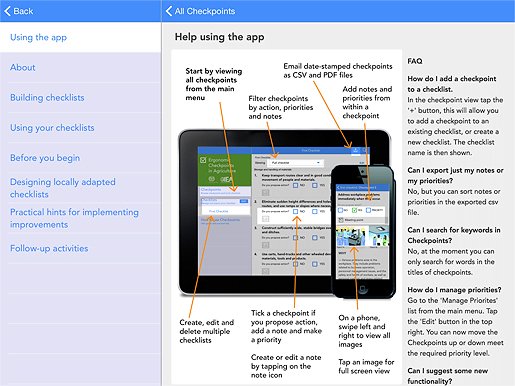Job stress costs American companies more than $300 billion a year in health costs, missed work, and poor performance. It takes a toll on American workers as well. About one-third of U.S. employees, many of whom are juggling home, finances, childcare, and aging parents report high levels of stress. In addition, one-fourth of employees cite the workplace as their number one life stressor. It may be no surprise then that 40% of job turnover is due to stress
Effect of stress
Stress is a natural reaction that everyone experiences from time to time. Anything from daily life to serious events can trigger stress. In the short term, stress, which creates the fight or flight response can improve a person’s mental and physical performance so they can cope with difficult or dangerous situations.
Also Read: E-Books: Investigation of Occupational Accidents and Diseases

The fight or flight response, which prompts someone to either stay and fight or run away and flee, is triggered by the release of hormones in the brain when it perceives a threat. These hormones then circulate in the bloodstream causing the heart to speed up, arteries to narrow, and breathing to increase. It makes a person’s muscles and thought processes ready to respond to survive an event. However, if the fight or flight response does not stop firing and the hormone levels stay elevated far longer than is needed to survive, it can negatively impact a person’s health.
Recent studies report that about 120,000 Americans die every year as a direct result of work-related stress. Some of the harmful health effects of extreme stress include:6
- irritability;
- anxiety disorders;
- depression;
- insomnia;
- heart disease;
- high blood pressure;
- diabetes;
- over or under-eating;
- alcohol or drug abuse;
- social withdrawal;
- damage to key brain structures and circuitry;
- reduced ability to cope with future stress;
- the onset of post-traumatic stress disorder (PTSD);
- reduced immune system functioning;
- and increased inflammation.
Also Read: Stress is a serious workplace hazard
Signs of Stress
One indicator that a person is under stress is their desire to consume more sweets, which contributes to abdominal fat, obesity, diabetes, high blood pressure, and heart disease. Under stress, digestion, too, is impaired, and people need more antacid products to cope with acid indigestion.

Chronic stress signals the body to store more fat. It weakens the immune system and increases the chances of people getting colds and infections. Increased fat can also damage the brain and other organs.
The Stress results of chronic stress make people jittery and cause them to lose focus, which can be dangerous on the road and at work. Stress also causes headaches, neck and shoulder pains, and fatigue. Any of these problems may increase injuries on the job.
Stress also causes headaches, neck and shoulder pains, and fatigue. Any of these problems may increase injuries on the job.
Stress also affects people’s relationships, making them short-tempered, impatient, and on edge. The result can be increased verbal and physical violence at home or work.
Stress also gives rise to an increase in negative thoughts and feelings, making it difficult for sufferers to be productive and perform at their best.
Also Read: Work-Related Stress short guide
Managing Stress
Since people are affected by events in different ways, each person must identify the situations that cause them stress. Then, each person should ask themselves if they have any control over those events. Most often, people find that the only things they can control are their attitudes and behaviors. Accepting responsibility for their personal choices often leads to a change in outlook and attitude. Having a plan in place to manage the negative effects of stress can also help a person keep their mental and physical health in check:
- Practice Deep Breathing The most simple and direct way to manage stress is for a person to become aware of their breathing. Most people take shallow breaths using only the upper lobes of their lungs. Shallow breathing never moves the stale air out or allows the body to fully exchange incoming oxygen with outgoing carbon dioxide. To begin deep breathing:
- Find a comfortable place to sit or lie down.
- Take a deep breath in and hold it for a slow count of three.
- Breathe out, and hold the lungs empty for a count of three.
- Repeat this exercise five to ten times.
- As the body becomes used to the increase in oxygen, practice deep breathing while walking, timing the breaths to each step.
- Increase Healthy Habits Living a healthy lifestyle can help reduce stress and increase the likelihood of a long, full life. To help keep stress in check, develop these habits:
- Get moderate, regular exercise.
- Eat a healthy, well-balanced diet that includes more fresh fruit and vegetables.
- Make time for regular health checkups.
- Get support from friends and family.
- Consider yoga or meditation.
- Schedule time to relax.
- Spend some time outdoors.
- Recognize personal accomplishments each day.
- Improve Communications Clear communications can reduce misunderstanding and risky or violent behavior. When people are stressed or emotionally overwhelmed, they are more likely to misread other people, send confusing or off-putting nonverbal signals, and lapse into unhealthy knee-jerk behaviors. To avoid conflict and misunderstanding and the stress that goes along with that learn to quickly calm down before continuing a heated conversation.
- Learn Time Management Prioritizing workloads, making a to-do list to set priorities, and creating a manageable schedule can help work proceed smoothly and reduce stress. Also, knowing when to take a break or walk away from others can be the best medicine to deal with the stress of daily life.
- Nurture a Sense of Humor People with a good sense of humor respond to stress with less anxiety, less depression, and fewer general mood disturbances. For those who feel their sense of humor could use a boost, try putting humorous calendars, funny sayings, or cartoons around to help keep negativity in check. Other techniques may include identifying several things every day that are bizarre; telling short, amusing stories to friends or co-workers; or watching goofy or silly short videos. Remember to keep in mind the words of newspaper columnist Peggy Noonan, “Humor is the shock absorber of life; it helps us take the blows.
- Seek Professional Help When Needed
For those who still feel overwhelmed, ask for support as soon as possible. Those using drugs or alcohol to cope or who are having suicidal thoughts should seek help from qualified mental health care providers immediately.
Ways Employers Can Help
According to the American Psychiatric Association Foundation and the Center for Workplace Mental Health, employers can reduce chronic workplace stress by focusing their efforts on three objectives: prevention, identification and intervention, and individual support.
Stress Prevention
Workplace stress prevention includes developing company-wide policies and practices in the following areas:
- Train leaders and supervisors on ways to reduce stress.
- Work with employees to create challenging yet realistic goals for job performance.
- Communicate clearly and manage conflicts respectfully.
- Identify and use employees’ strengths and skills for career advancement.
- Compensate employees fairly.
- Provide safe work conditions.
- Model work-life balance.
- Build-in opportunities to recognize individual and team goal achievements.
- Create a work climate that encourages social support and connectedness.
- Develop ways to highlight positive daily workplace events and accomplishments.
Read: E-Books: Mental health at work series
Stress Identification and Intervention
Identify and intervene early in job-related stress among employees.
- Train employees on ways to reduce stress and spot the early warning signs of mental health conditions.
- Offer stress and mental health screenings.
- Provide access to stress management programs and cognitive-behavioral therapy as part of the company’s employee benefits package.
- Create programs for mindfulness and relaxation, such as yoga, tai chi, and meditation.
- Educate employees on how to improve resiliency (the ability and toughness needed to withstand and recover quickly from difficulties).

Offer Individual Support
Workplace stress can impact the bottom line. Fortunately, it can be managed to increase productivity, improve employee health, and advance a more positive work climate and culture
- Help employees access professional care and support for stress and other mental health issues.
- Start an active outreach program for employees out on disability.
- Keep employees engaged with supervisors and co-workers.
- Develop effective transition and return-to-work policies and practices.
Also Read: Managing and Reduction of Workplace Stress
Please visit our Safety Resources SAFETY BAG to have many Safety Resources





